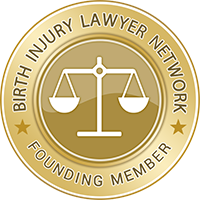Breech Birth Injuries
What has been widely considered as the normal position of an infant upon delivery is headfirst. Before a baby becomes full term which is 37 weeks or nine months, the baby is supposed to turn in the uterus with the head moving closer to the birth canal. If this does not happen, the baby’s buttocks or feet will likely come out first. This position is what is known as “breech” and when a baby is born this way, it is known as a breech birth.
Out of 25 full-term births, one is more likely to be born in a breech position. Mothers of babies born breeched should observe their babies because although they are born healthy, they may have some birth defects and this could be the reason why they failed to move into the proper position before full term.
There are three types of breech positions; the frank breech, complete breech and the footling breech. In the frank breech, the baby’s buttocks are pointed towards the birth canal while its legs stick straight up in front of its body and its feet lie near its head. The complete breech, on the other hand, has the baby’s buttocks still pointing downwards but its legs are folded at the knees with its feet lying near its buttocks while in the footling breech, both the baby’s legs are pointed towards the birth canal. The fetal heart sounds of a baby in breech position can be heard just above the umbilicus.
This kind of birth also poses a hazard to both baby and mother especially since about 10 to 15 percent of babies having breech position are only discovered during labor.
Prematurity is one of the leading causes of a baby’s breech position. Factors that may lead to a baby assuming a breech position are:
- multiple pregnancy such as having twins, triplets or more.
- abnormal amount of amniotic fluid
- fetal anomalies, congenital abnormalities
- uterine abnormalities
- mother previously delivered via the Caesarean section
- mother having contracted pelvis
- mother having placenta previa
- congenital malformation of the uterus such as septate or bicornuate uterus
- multiparae with lax abdominal wall
A healthcare provider may suggest attempting to turn the baby headfirst prior to giving birth or between the 32nd and 37th week. This method is called the external cephalic version. It is a non-surgical method wherein a midwife or a doctor attempts to turn the baby headfirst through the mother’s abdomen.
Cord prolapse is one of the risks of a breech birth. As the baby moves through the birth canal, the umbilical cord might get compressed and result to oxygen deprivation for the baby. Or, forceps may be needed to deliver the baby’s head especially in premature babies wherein the head is larger than its body. Head entrapment likewise could also result to the slowing of oxygen and blood supply to the baby.
Most healthcare providers would advise the mother to deliver via the Caesarian Section if their babies have been detected to be in breech position. This is also especially the case if the baby is premature.
Find an Experienced Birth Injury Attorney in your Local Community
 Find A Lawyer in Columbus, OH
Find A Lawyer in Ohio
Find A Lawyer in Any State
Find A Lawyer in Columbus, OH
Find A Lawyer in Ohio
Find A Lawyer in Any State
